Evolutionary Ecology
The department of Evolutionary Ecology gathers complementary skills in behavioural ecology, population dynamics, population biology, community ecology, and methodology (statistics and modelling). The research done in the department aims at studying how animal species evolve in a changing world by understanding the causes of the evolution of traits, adaptations and interactions. For that, we consider different levels of organization from individuals to populations and communities. Because organisms cannot be considered isolated from other biotic factors, we consider pathogens but also competing species within communities.
We study how individuals adapt to their environments that are largely impacted by anthropic pressures, and how life history traits and behaviour evolve in response to these pressures. Although we mainly focus on phenotype, we more and more consider the mechanistic link between the genotype and the phenotype. We develop the theoretical framework of our discipline through a conceptual and modeling approach. In parallel, we test hypotheses that arise from theoretical predictions through experimental, comparative and observational approaches on different biological models (insects, birds, mammals). Experimental approaches are developed in the laboratory (insect model) and in natura (bird, insect and mammal models). Observational and comparative research is mainly concerned with vertebrates. Our approaches are also, and increasingly, interested in the mechanisms of adaptive responses. In addition to the classical approaches of demographic analysis and trait change, methods of ecophysiology, chemical ecology and molecular biology are used.
Our department hosts several long-term studies of wild populations of different species. These long-term studies offer a valuable way to understand how biotic and abiotic factors affect individuals’ life history traits, and the functioning of populations in natura. Five populations of mammalian species are thus monitored for several years (more than 40 years on roe deer, 30 on Alpine marmots, 25 years on cats, 16 years on zebras, and 20 years on impala). Two of our study sites (La Sassière in Vanoise National Park (Alpine marmots) and Hwange National Park) have been certified as “Site d’Etude en Ecologie Globale” (SEEG), and two (ZA “Hwange” and ZA “Antarctic and sub-Antarctic”) were certified as “Zone Atelier” by the CNRS.
The department of Evolutionary ecology is also largely involved in training activities. Lastly, we also have strong socio-economic relationships. Indeed, because we address questions of major societal interest (global warming, public health) we tightly collaborate with socio-economic partners (Office Français de la Biodiversité, Vanoise National Park, Hwange National Park in Zimbabwe, Office National des Forêts, etc.) and participate to general public and media events.
Publications
Display of 1861 to 1890 publications on 2454 in total
Limited nest site availability helps seabirds to survive cat predation on islands
Ecological Modelling . 214 : 316-324
Journal article
see the publicationVaccination of free-living juvenile wild rabbits textit(Oryctolagus cuniculus) against myxomatosis improved their survival
Preventive Veterinary Medicine . 84 : 1-10
Journal article
see the publicationPhylogeny and biogeography of African Murinae based on mitochondrial and nuclear gene sequences, with a new tribal classification of the subfamily.
BMC Evolutionary Biology . 8 : 199
Journal article
see the publicationFecundity and survival in relation to resistance to oxidative stress in a free-living bird
Ecology . 89(8) : 2584-2593
Journal article
see the publicationHabitat Selection and Habitat Suitability Preferences
incollection . 3 : 1810-1830
Journal article
see the publicationSpatial scale of local breeding habitat quality and adjustment of breeding decisions
Ecology . 89 : 1436-1444
Journal article
see the publicationOn the number of principal components: A test of dimensionality based on measurements of similarity between matrices
Computational Statistics and Data Analysis . 52 : 2228-2237
Journal article
see the publicationAge-specific feeding cessation in male red deer during rut
Journal of Zoology . 275(4) : 469-477
Journal article
see the publicationPopulation density and sex do not influence fine-scale natal dispersal in roe deer
Proceedings of the Royal Society B: Biological Sciences . 275 : 2025-2030
Journal article
see the publicationThe timing of male reproductive effort relative to female ovulation in a capital breeder
Journal of Animal Ecology . 77(3) : 469-477
Journal article
see the publicationAntibodies against Salmonella is associated with reduced reproductive success in female alpine chamois (rupicapra rupicapra)
Canadian Journal of Zoology . 86 : 1111-1120
Journal article
see the publicationDiseases and reproductive success in a wild mammal: example in the alpine chamois.
Oecologia . 155 ( 4 ) : 691-704
Journal article
see the publicationSerotyping of Toxoplasma gondii: striking homogeneous pattern between symptomatic and asymptomatic infections within Europe and South America.
Microbes and Infection . 10 ( 7 ) : 742-7
Journal article
see the publicationA Population Dynamics Analysis of the Interaction between Adaptive Regulatory T Cells and Antigen Presenting Cells
PLoS ONE . 3() : 1-9
Journal article
see the publicationQuantitative risk assessment for Escherichia coli O157:H7 in frozen ground beef patties consumed by young children in French households
International Journal of Food Microbiology . 128 : 77-84
Journal article
see the publicationPersistence of Shiga toxin-producing Escherichia coli O26 in various manure-amended soil types
Journal of Applied Microbiology . 104 : 296-304
Journal article
see the publicationOptimal release strategies for the biological control of aphids in melon greenhouses
Biological Control . 48 ( 1 ) : 12 - 21
Journal article
see the publicationFrom W.S. Gosset`s pieces of card (1908) to R software : analysing Macdonell`s dataset of 3000 criminals
Biométrie Humaine et Anthropologie - revue de la Société de biométrie humaine . 26 : 33-39
Journal article
see the publicationAn agent-based model for predicting the prevalence of Trypanosoma cruzi I and II in their host and vector populations
Journal of Theoretical Biology . 255 : 307-315
Journal article
see the publicationForaging and associative learning of visual signals in a parasitic wasp
Animal Cognition . ( 11 ) : 525-533
Journal article
see the publicationDensity-dependent body condition and recruitment in a tropical ungulate
Canadian Journal of Zoology . 86 ( 1 ) : 24-32
Journal article
see the publicationDeterminants of seasonal variation in activity patterns of mouflon
Canadian Journal of Zoology . 86 : 1410-1418
Journal article
see the publicationAdaptation locale et optimalité des stratégies de dormance en environnement imprévisible : Développements théoriques et validation expérimentale chez le balanin de la chataîgne Curculio Elephas
incollection . -- : 321-328
Journal article
see the publicationProlonged diapause: A trait increasing invasion speed ?
Journal of Theoretical Biology . 251 : 317-330
Journal article
see the publicationStochastic extinction and the selection of the transmission mode in microparasites.
Journal of the Royal Society Interface . 5 ( 26 ) : 1031-9
Journal article
see the publicationImpact of myxomatosis in relation to local persistence in wild rabbit populations: the role of waning immunity and the reproductive period
Journal of Theoretical Biology . 250 ( 4 ) : 593-605
Journal article
see the publicationVisiting Sick People: Is It Really Detrimental to Our Health?
PLoS ONE . 3 : 81-89
Journal article
see the publicationRevealing cryptic spatial patterns in genetic variability by a new multivariate method
Heredity . 101 : 92-103
Journal article
see the publicationThe morphology of islets of Langerhans is only mildly affected by the lack of Pdx-1 in the pancreas of adult Meriones jirds
General and Comparative Endocrinology . 159 : 241-9
Journal article
see the publicationDisentangling allometry and response to Kellwasser anoxic envents in the Late Devonian conodont genus Ancyrodella
Lethaia . 40 : 383-394
Journal article
see the publication
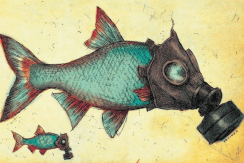
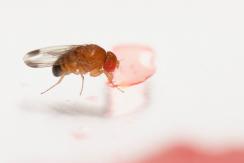
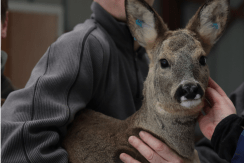
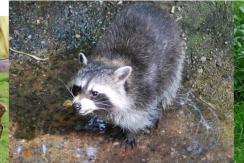
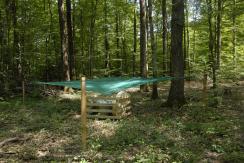
You also, comment on this article